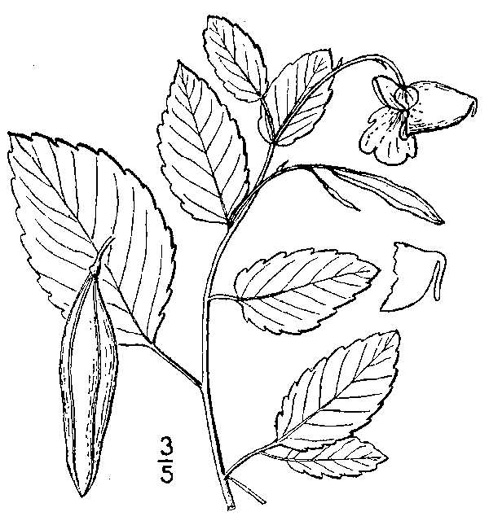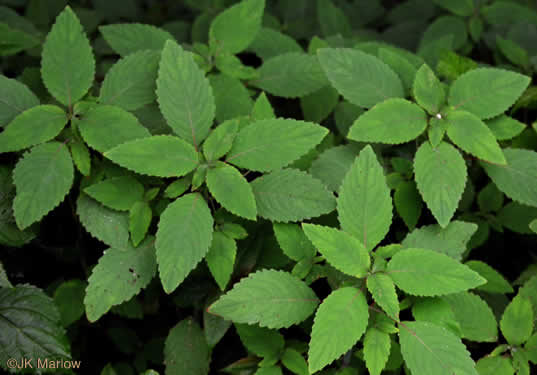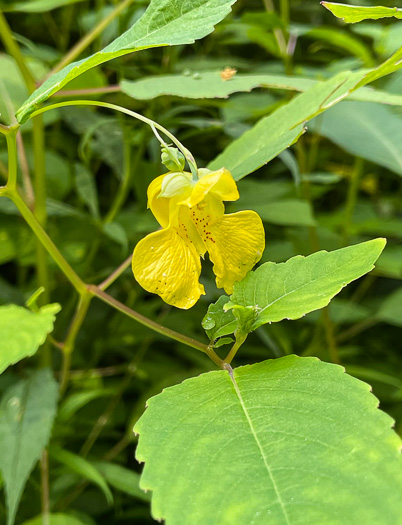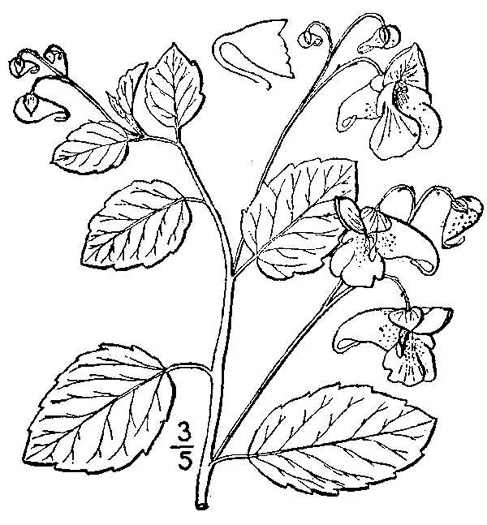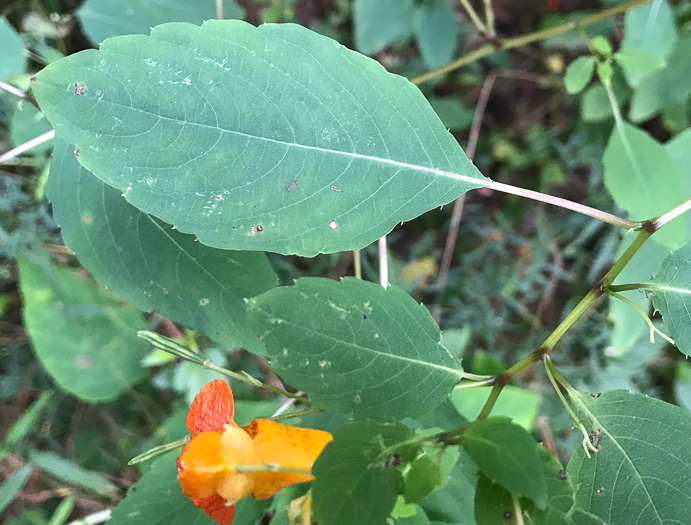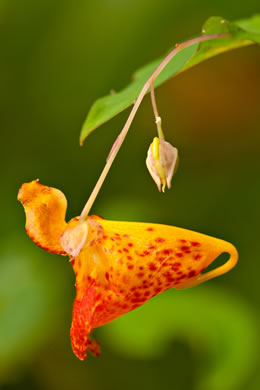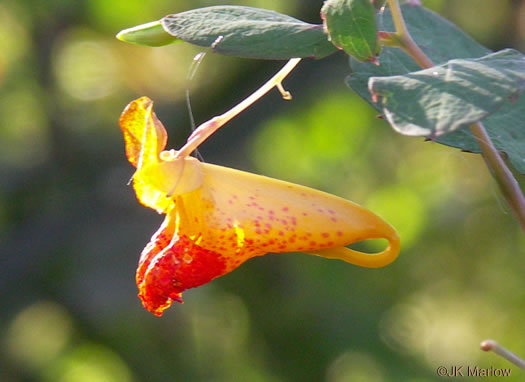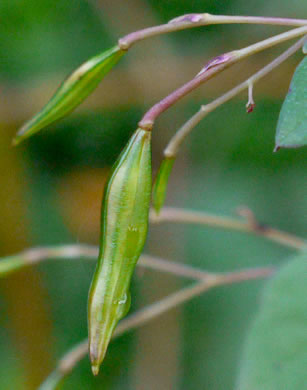Hovering over an image will enlarge it and point out features (works better on desktop than on mobile).
![]() A camera indicates there are pictures.
A camera indicates there are pictures.
![]() A speaker indicates that a botanical name is pronounced.
A speaker indicates that a botanical name is pronounced.
![]() A plus sign after a Latin name indicates that the species is further divided into varieties or subspecies.
A plus sign after a Latin name indicates that the species is further divided into varieties or subspecies.
Most habitat and range descriptions were obtained from Weakley's Flora.
Your search found 3 taxa in the family Balsaminaceae, Touch-me-not family, as understood by PLANTS National Database.

![]()
![]() Common Name:
Pale Jewelweed, Pale Touch-me-not, Yellow Jewelweed, Yellow Touch-me-not
Common Name:
Pale Jewelweed, Pale Touch-me-not, Yellow Jewelweed, Yellow Touch-me-not
Weakley's Flora: (4/24/22) Impatiens pallida FAMILY: Balsaminaceae
SYNONYMOUS WITH PLANTS National Database: Impatiens pallida FAMILY: Balsaminaceae
SYNONYMOUS WITH Vascular Flora of the Carolinas (Radford, Ahles, & Bell, 1968): Impatiens pallida 118-01-001 FAMILY: Balsaminaceae
Habitat: Cove forests, streambanks, seepages, moist forests, bogs, roadsides
Common in NC Mountains (rare elsewhere in GA-NC-SC)
Native to North Carolina & Georgia

![]()
![]() Common Name:
Spotted Jewelweed, Spotted Touch-me-not, Orange Jewelweed, Orange Touch-me-not
Common Name:
Spotted Jewelweed, Spotted Touch-me-not, Orange Jewelweed, Orange Touch-me-not
Weakley's Flora: (4/24/22) Impatiens capensis FAMILY: Balsaminaceae
SYNONYMOUS WITH PLANTS National Database: Impatiens capensis FAMILY: Balsaminaceae
SYNONYMOUS WITH Vascular Flora of the Carolinas (Radford, Ahles, & Bell, 1968): Impatiens capensis 118-01-002 FAMILY: Balsaminaceae
Habitat: Moist forests, bottomlands, cove forests, streambanks, bogs
Common (uncommon in GA Coastal Plain)
Native to the Carolinas & Georgia

Common Name: Ornamental Jewelweed, Himalayan Balsam, Himalaya Touch-me-not, Indian Balsam
Weakley's Flora: (4/24/22) Impatiens glandulifera FAMILY: Balsaminaceae
SYNONYMOUS WITH PLANTS National Database: Impatiens glandulifera FAMILY: Balsaminaceae
Habitat: Disturbed areas
Waif(s)
Non-native: Asia
Your search found 3 taxa. You are on page PAGE 1 out of 1 pages.

